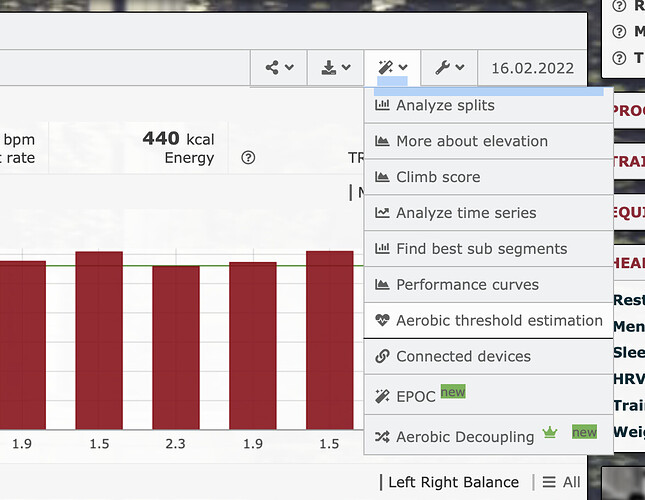This is RunAnalyze analysis of
- Garmin recorded HRV data (via ANT+)
- BreakAway App Recorded HRV Data (via BLE)
I’ve not played around w/ DFAAAlpha1
Pick an activity, then on the right hand side, the “magic marker(?)” icon.
See the “aerobic threshold estimation”
That’s what you click. (took me a while to search for it as well as I don’t use this site)
